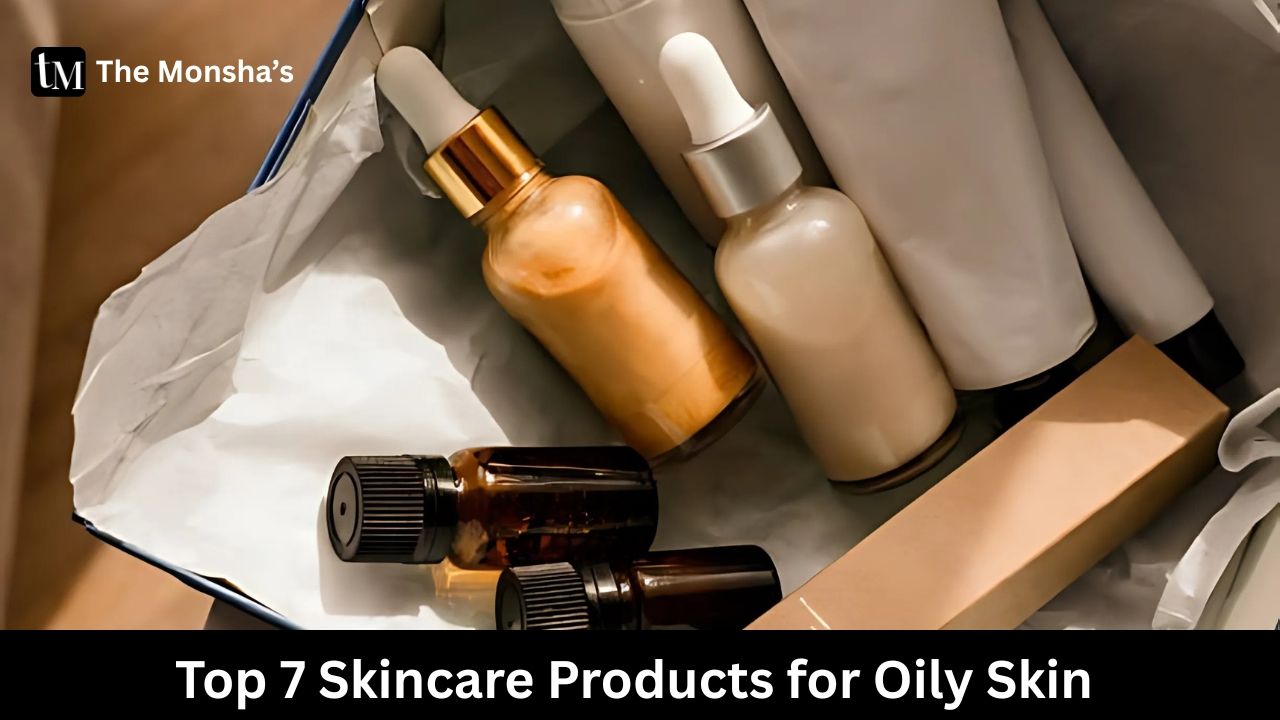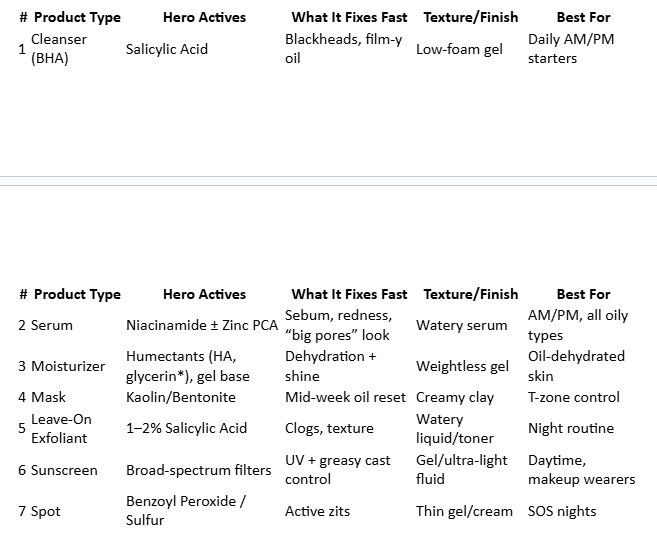
If your T-zone could fry pakoras by noon, welcome. Oily skin isn’t the villain; unbalanced routines are. This list is lean, evidence-backed, and humidity-proof. Expect lightweight, non-comedogenic, oil-regulating picks, minus the marketing fluff. We’ll keep it matte, not flat.
Why it works: Oil-soluble BHA slips into pores, dissolves sebum plugs, helps with blackheads, reduces shine without stripping when used sensibly.Use: Once daily to start; over-cleansing = rebound oil.Backed by: AAD acne guidance recognizes salicylic acid as a topical option; reviews reiterate its comedolytic action.
Why it works: Down-regulates surface oil, refines look of pores, calms redness.Use: AM/PM after cleansing; play nice with most actives.Backed by: Double-blind data showing 2% niacinamide reduced facial sebum excretion rates; reviews support ongoing benefit. Zinc PCA combinations show added oil and lesion control.
Why it works: Hydration signals the skin to chill on oil output; gels avoid that slick finish.Use: Pea-to-almond size over damp skin.Backed by: Clinical logic: maintain barrier hydration to avoid over-producing oil; choose non-comedogenic gels. (See AAD’s non-comedogenic, skin-type-fit principles.)
Why it works: Clays bind excess sebum, reduce shine, and improve texture when used consistently (not daily).Use: Thin layer on T-zone for 8–10 minutes.Backed by: Clinical assessments of clay masks in oily/acne skin show improvements in sebum and skin parameters; safety profile is favorable. Reviews of cosmetic clays further affirm their absorbent role.
Why it works: Daily micro-exfoliation keeps pores from re-clogging; complements the cleanser.Use: PM, 2–4 times a week; buffer with moisturizer if tingling.Backed by: Same AAD-aligned rationale for salicylic acid in acne/oil control.
Why it works: Modern gel or ultra-light fluids protect without greasy residue; some include mattifiers/niacinamide.Use: Two-finger rule for face/neck; reapply outdoors.Backed by: AAD guidance (broad-spectrum SPF 30+), plus expert roundups highlighting oil-control, fast-absorbing textures as best for oily/acne-prone skin.
Why it works: Targets inflammatory spots without loading the whole face; benzoyl peroxide is first-line for acne bumps.Use: Dab at night; moisturize after to reduce dryness.Backed by: AAD includes benzoyl peroxide among recommended topical therapies.

*Yes, glycerin is fine in small, balanced gel systems; avoid heavy occlusives if you’re super oily. For SPF, stick to non-comedogenic, oil-free claims and matte finishes per derm recs.
AM: Cleanser → Niacinamide serum → Gel moisturizer → Gel sunscreenPM: Cleanser → BHA liquid (2–4×/week) → Niacinamide serum → Gel moisturizer → Spot treat only where neededWeekly: Clay mask 1–2× (T-zone).Common mistakes: Over-washing (triggers rebound oil), skipping moisturizer (barrier freaks out), layering too many actives on the same night (hello irritation). AAD guidance supports measured use of SA/BPO; keep it smart, not maximalist.
Do I really need moisturizer if I’m oily?Yes. Hydration ≠ grease. Balanced gels keep the barrier calm, which can help reduce the over-produce-then-blot cycle.
BHA cleanser and leave-on BHA?You can — but stagger. Start with a BHA cleanser daily, then add a leave-on BHA a few nights a week. Watch for tightness/peel.
Best sunscreen texture if I hate shine?Look for “oil-free,” “non-comedogenic,” “gel,” “dry-touch,” or “matte” on the label. Reapply if you’re outdoors; if your SPF is hydrating enough, you can skip a separate AM moisturizer.
Where does zinc PCA fit?Often paired with niacinamide; helps tamp down oil and look of redness. Nice to have, not mandatory.
Oily skin doesn’t need punishment; it needs smart light layers. Keep your cleanser gentle, your actives purposeful, your SPF breathable — and let the clay do the heavy lifting on reset days. Consistency > chaos. If you stay the course for a few skin cycles, midday glare turns into soft, controlled glow. ✨